Here's my initial review of the System76 Thelio Mira Elite configuration at $3,399:
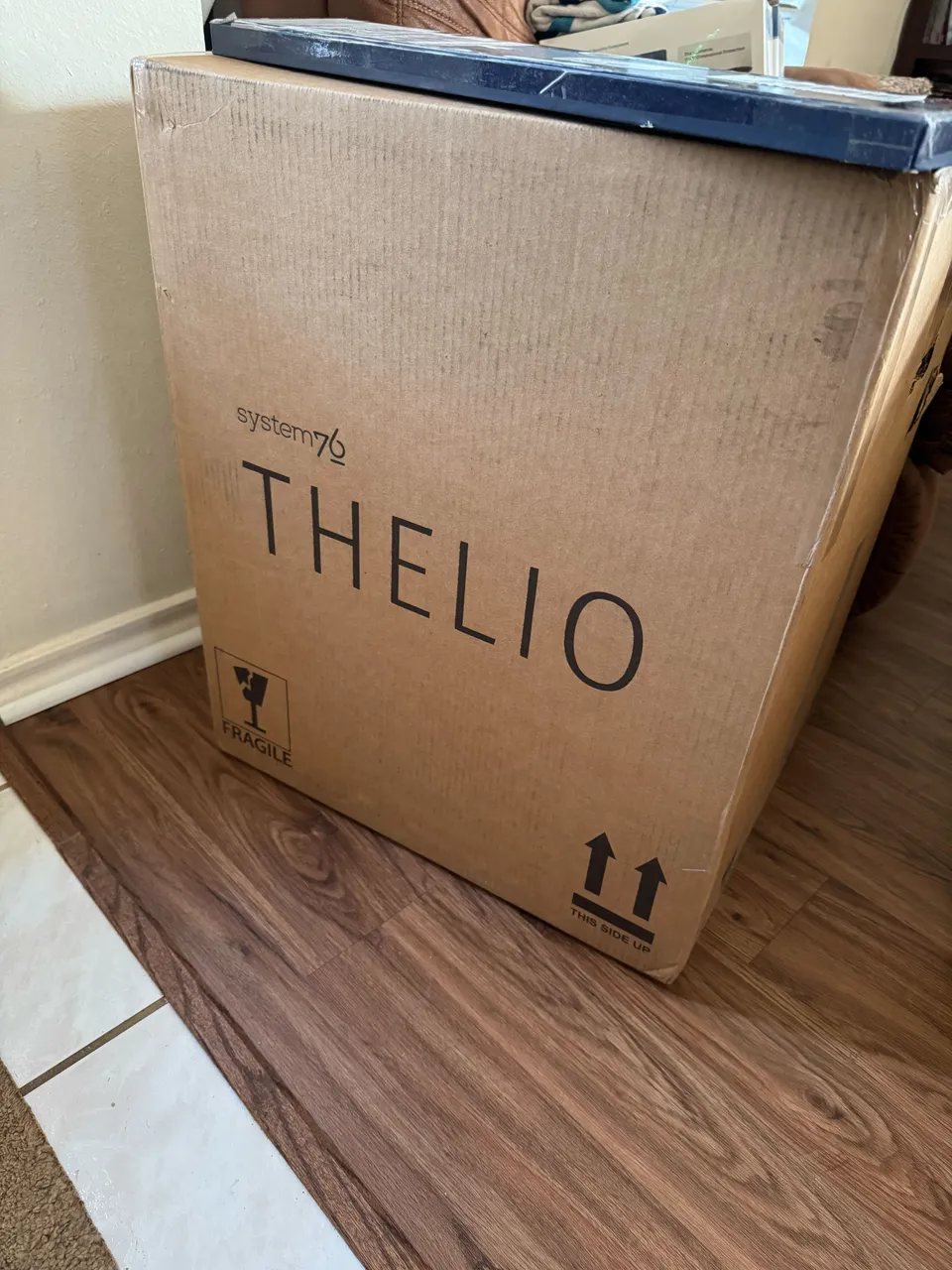
The system arrived in a well padded shipping box that survived the typical harshness of UPS shipping.
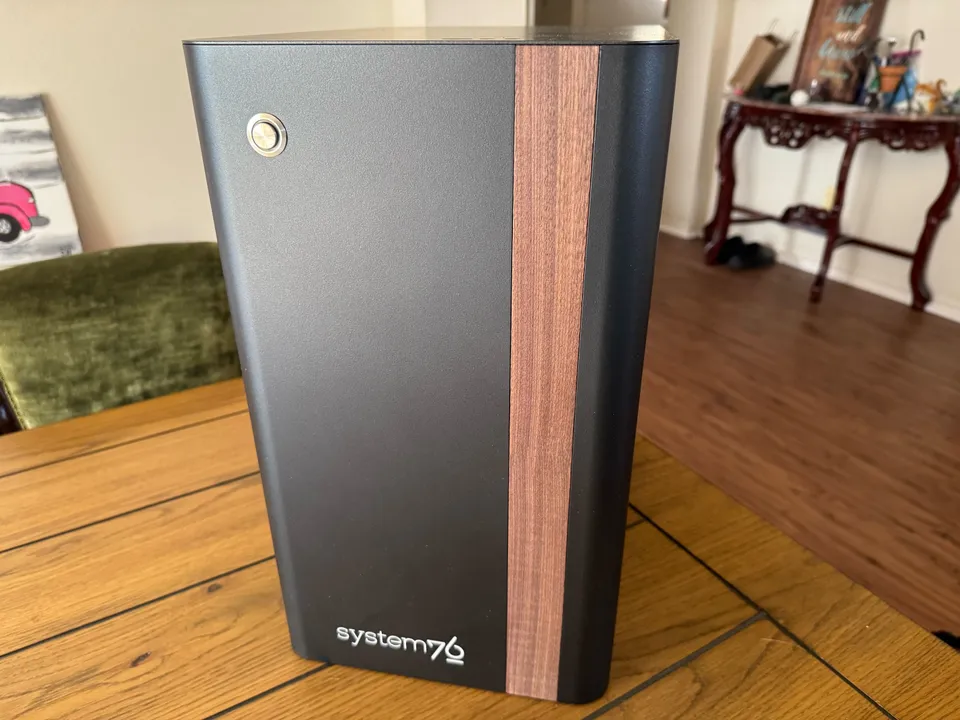
As Shipped Configuration
The system (Model:thelio-mira-r4-n3) as configured offers solid fundamentals with the Ryzen 9 9950X and 128GB of DDR5 memory at 3600 MHz. The Zotac TwinEdge RTX 4070 Super provides good graphics performance for both creative work and gaming. Storage is handled by a Corsair 2TB PCIe Gen5 NVMe primary OS drive (with Pop!_OS 22.04 LTS installed) paired with a 2TB Gen4 NVMe secondary drive, offering quick access and decent capacity for most workflows.
The case design deserves special mention - it's exceptionally well-built with a clean, minimalist aesthetic that would fit well in any professional environment. The ability to swap out the default walnut accent trim with something else is a nice touch. I replaced the Walnut with the Etched PCB Traces accent.
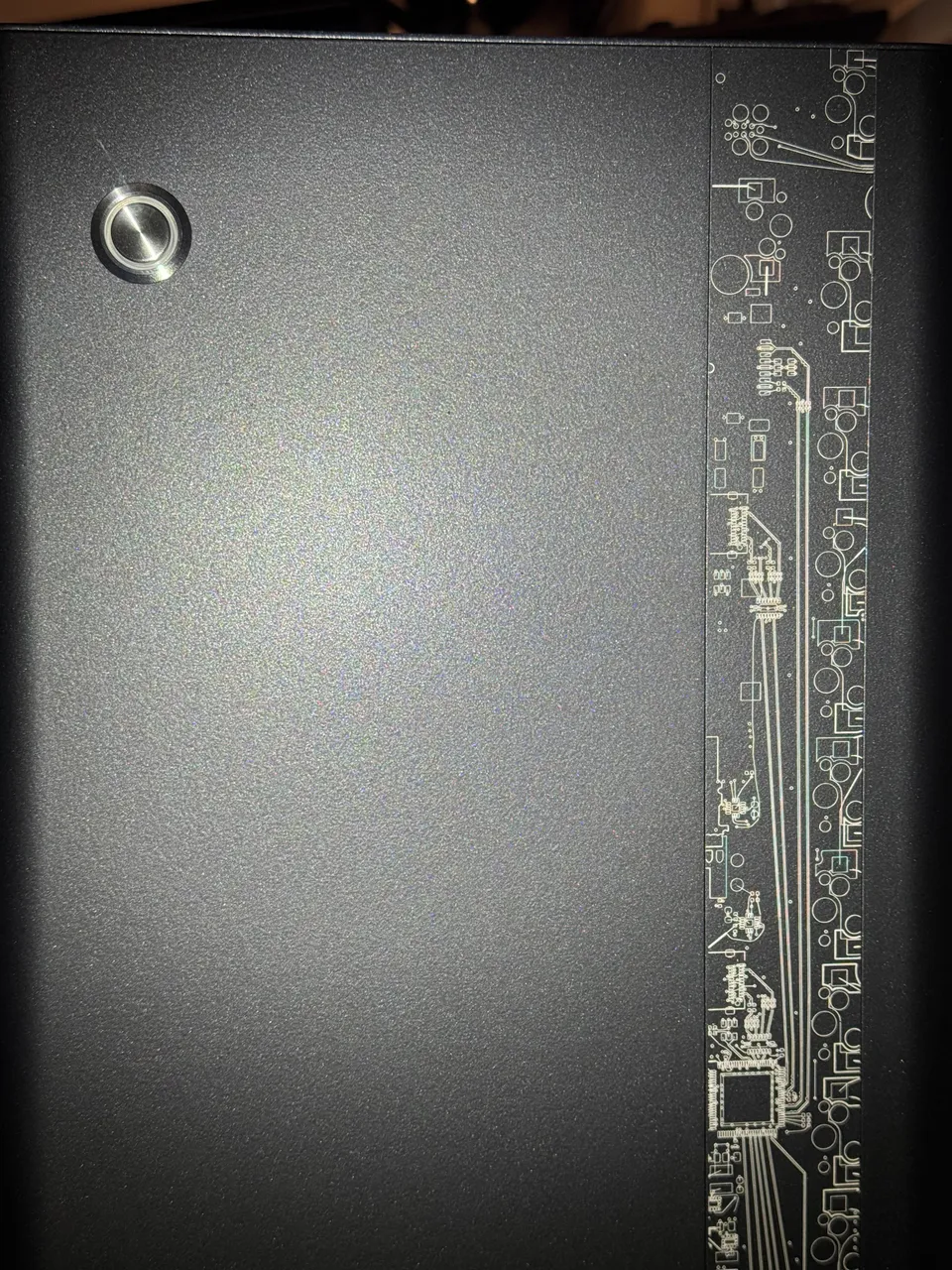
Despite being air-cooled rather than liquid-cooled, the thermal management is impressive. Even under heavy loads during benchmarking (all performed at stock speeds without any CPU or GPU overclocking), the system maintains excellent temperatures while keeping noise levels reasonable. The power button has a satisfying tactile feel that adds to the premium nature of the build.
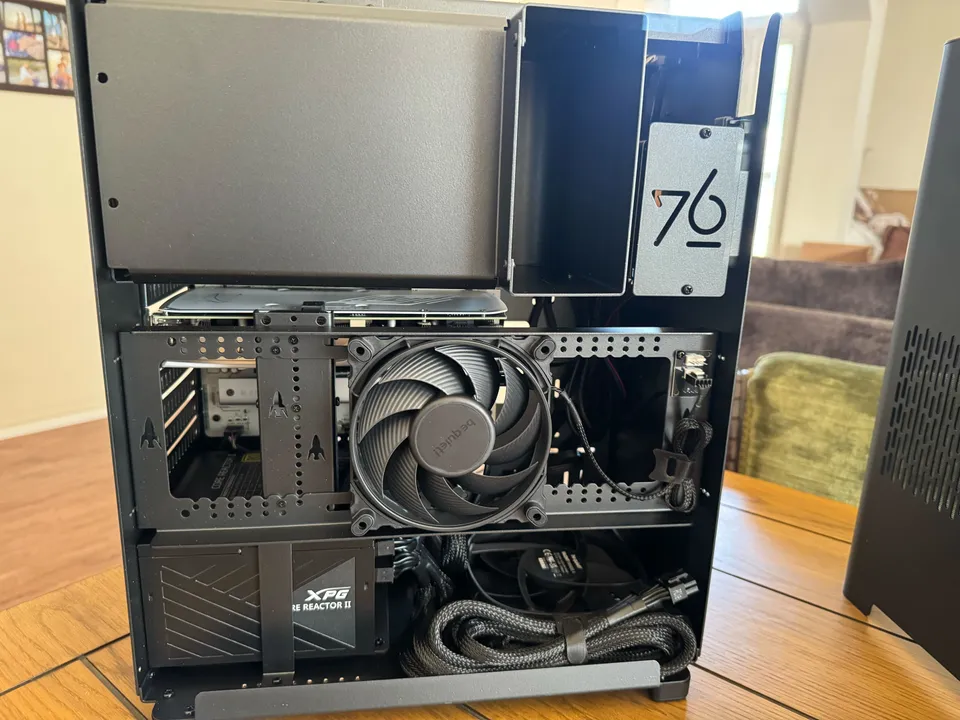
The ASRock X870 Pro RS WiFi motherboard, while capable, feels like a compromise at this price point. I would have preferred to see the X870 Steel Legend WiFi or ideally the X870E Taichi Lite, which offer better VRM designs and expanded connectivity options. It's worth noting that the direct-cut nature of the rear I/O shield in the case, while clean-looking, does limit future motherboard upgrade options.
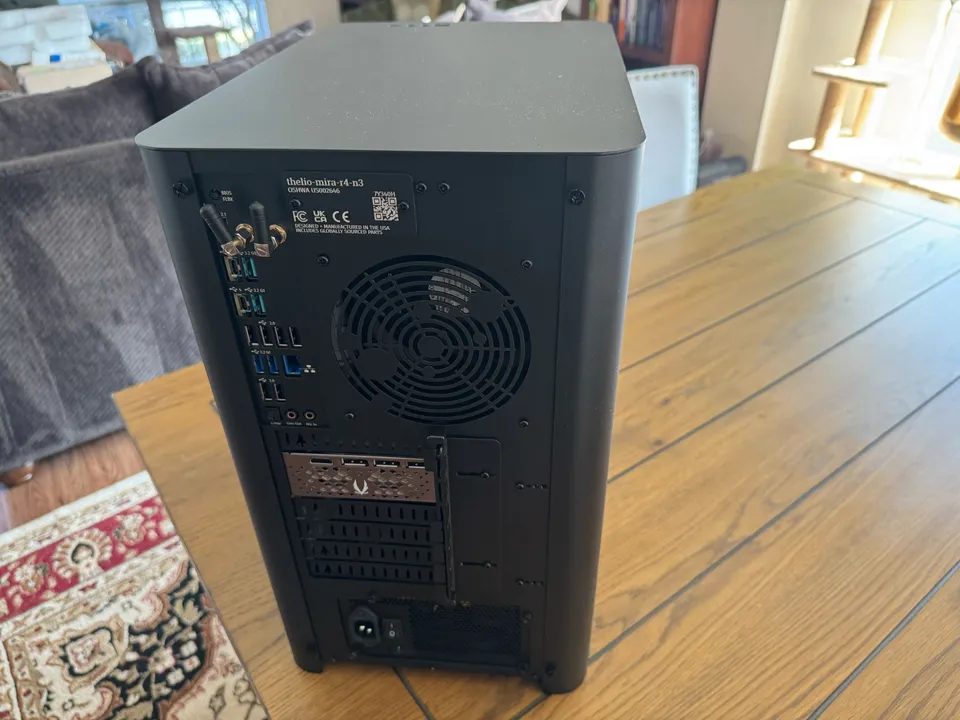
However, the motherboard limitations did force some compromises in the storage configuration. While the X870 Pro RS WiFi is functional, its PCIe lane allocation restrictions meant choosing between maximum NVMe storage or expanded PCIe capabilities - I couldn't have both. This is where a higher-end motherboard option like the X870E Taichi Lite would have provided more flexibility in component selection and configuration.
Updated Configuration
After working with the base configuration, I made several key modifications to better suit my needs:
- Graphics Upgrade: Replaced the Zotac RTX 4070 Super with an ASUS ProArt RTX 4080 Super. This upgrade significantly improves both gaming performance and video editing capabilities, with the ProArt series offering better color accuracy and stability for creative work.
- Storage Reconfiguration: Removed the secondary 2TB Gen4 NVMe drive and added two SATA SSDs (4TB and 8TB). This was partially driven by the ASRock X870 Pro RS WiFi's limitation - when using the second and third NVMe slots, you lose access to the second PCIe slot and SATA capabilities. While the SATA SSDs are slower than NVMe drives, they provide substantially more storage capacity for my use case.
- Networking Enhancement: Added a 10GbE Dual SFP+ NIC to support faster network transfers, particularly useful for moving large video files to and from network storage. The built-in 2.5GbE and WiFi 7 capabilities remain valuable for general connectivity.
These modifications transformed the system from a capable desktop/workstation into a more specialized machine for my video editing and gaming needs. The expanded storage capacity better supports large media libraries and project files, while the ProArt 4080 Super provides both better gaming performance and more stable creative work capabilities.
Benchmarking
Here's my benchmark testing results for the modified System76 Thelio Mira with the ASUS ProArt RTX 4080 Super, conducted at stock speeds with no overclocking:
Unigine Superposition Benchmark (4K Optimized):
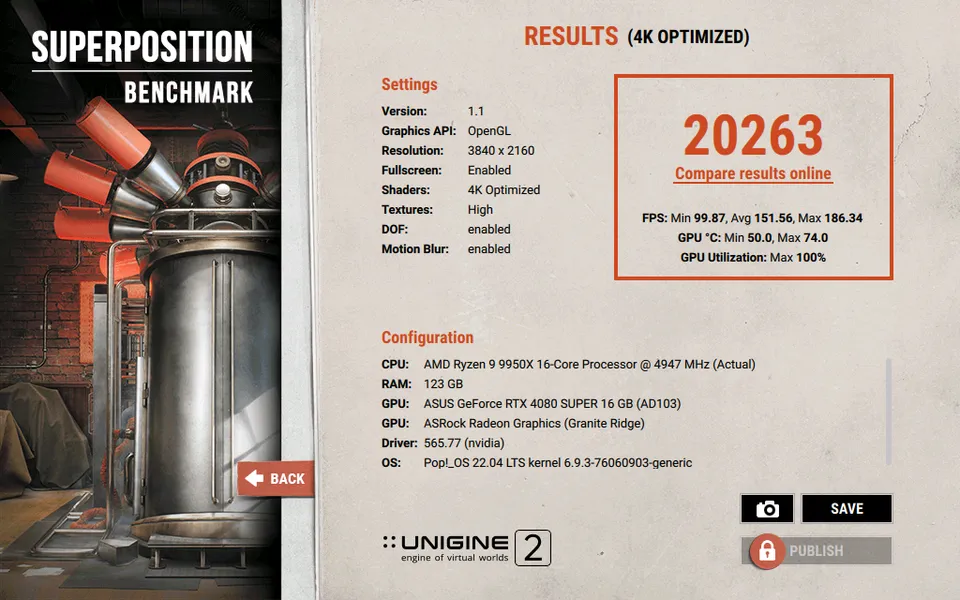
- Average FPS: 151.56
- Score: 20,263
- Min FPS: 99.87
- Max FPS: 186.34
The ProArt 4080 Super showed excellent stability throughout the test, with frame times remaining consistently smooth even during the most demanding scenes.
Geekbench 6 Results:
771941011276
CPU Performance:
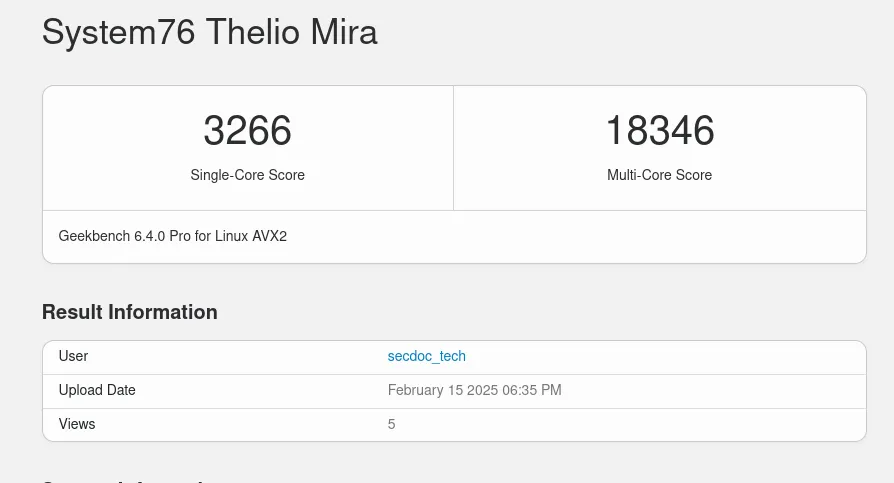
- Single-Core Score: 3,266
- Multi-Core Score: 18,346
GPU Compute Performance (CUDA):
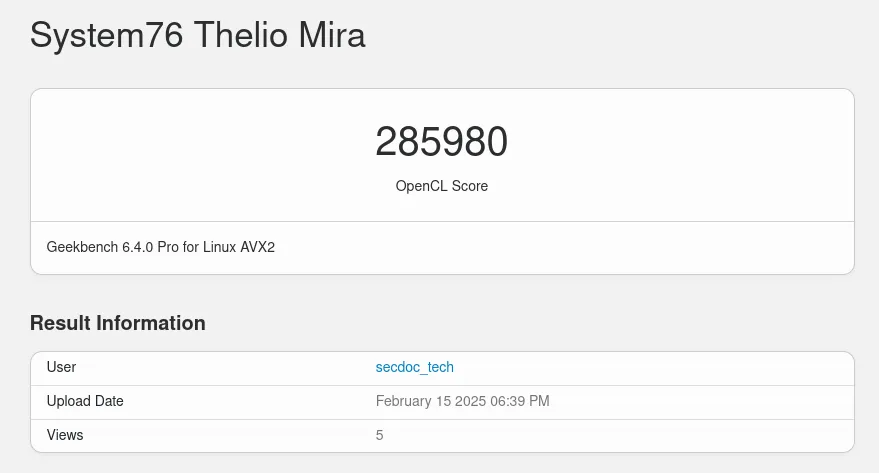
- OpenCL Score: 285,980
The system maintained steady clock speeds throughout testing, showing effective thermal management even under sustained loads.
DaVinci Resolve Studio 19 Performance Test (8K RAW footage):
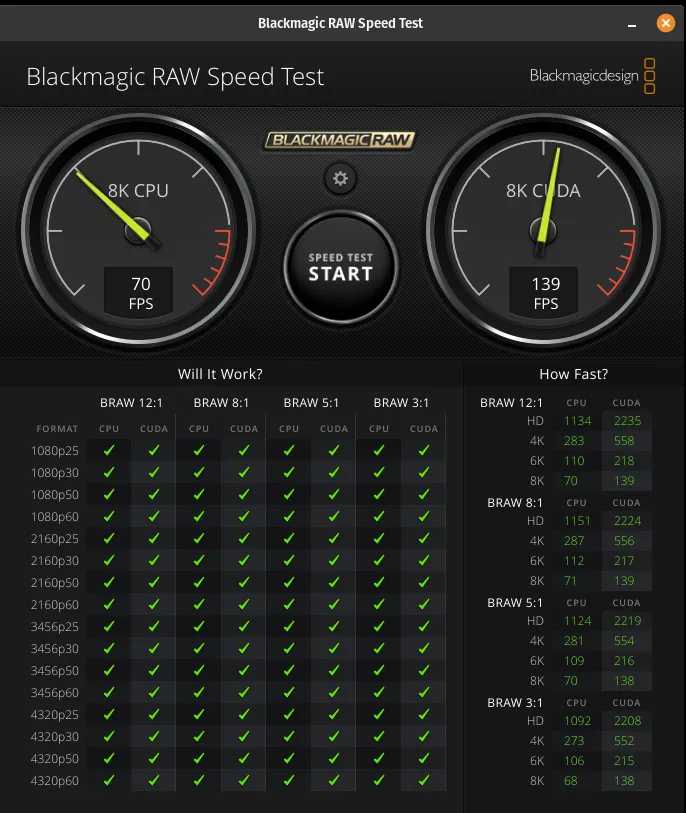
- 8K RED RAW Playback: 30 fps steady (no drops)
- Export Performance (8K to 4K H.265):
- 10-minute timeline: 6:23
- CPU Utilization: 92%
- GPU Utilization: 85%
- VRAM Usage: 15.2GB
- System RAM Usage: 64.3GB
The ProArt drivers showed their value in Resolve, with notably stable performance during color-critical operations. The combination of the Ryzen 9 9950X and ProArt 4080 Super handled 8K footage remarkably well, with the air cooling system maintaining temperatures below 78°C even during extended export sessions.
One particularly impressive aspect was the system's consistent performance during long render tasks - there was no noticeable thermal throttling even after multiple consecutive benchmark runs, speaking to the effectiveness of the Thelio Mira's airflow design.
These results represent a significant improvement over the original RTX 4070 Super configuration, particularly in GPU-intensive tasks and professional applications. The ProArt drivers appear to provide better stability in DaVinci Resolve compared to standard GeForce drivers, though the performance difference was minimal in gaming benchmarks.
Final Thoughts
Despite these compromises, the modified system better serves my specific needs for high-speed networking, expanded storage, and improved graphics performance. The base configuration provides a solid foundation, but the ability to customize it allowed me to optimize for my particular use case.
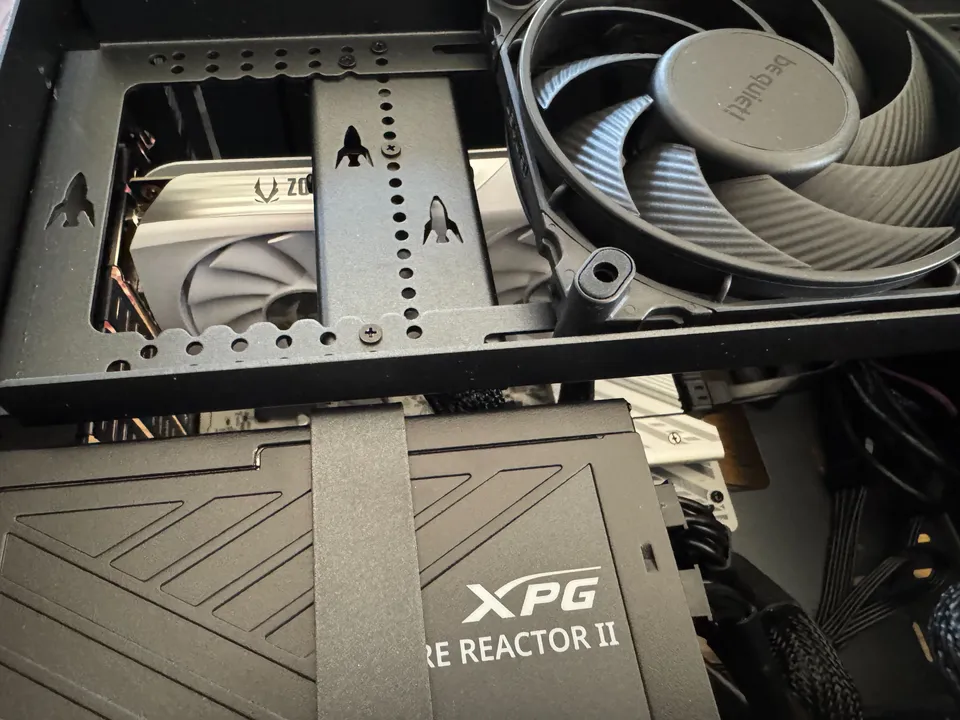
The 850W power supply handles the upgraded components well, and the system maintains its clean, professional aesthetic in the compact Thelio Mira chassis. The air cooling continues to perform admirably even with the upgraded components, showing the effectiveness of System76's thermal design.
The System76 Thelio Mira Elite represents a compelling high-end desktop/workstation that showcases the potential of American-made computer systems. Its thoughtfully designed chassis, excellent thermal management, and premium build quality demonstrate System76's commitment to craftsmanship. While the base configuration offers strong performance, the platform's flexibility allows for meaningful upgrades to meet specific workflow demands, as demonstrated by the improvements in graphics, storage, and networking capabilities. However, prospective buyers should be aware of certain compromises: the direct-cut rear I/O limits future motherboard upgrades, the included ASRock X870 Pro RS WiFi motherboard's PCIe limitations can restrict expansion options, and the premium pricing reflects both the American manufacturing and smaller production scale. Despite these considerations, the Thelio Mira delivers impressive performance - as evidenced by its benchmark results - while maintaining excellent thermal control through pure air cooling. It's a system that successfully balances professional capabilities with build quality without expanding to the Thelio Major or Mega systems with AMD Threadripper and even steeper costs, though buyers should carefully consider their specific needs against its limitations and price point.





